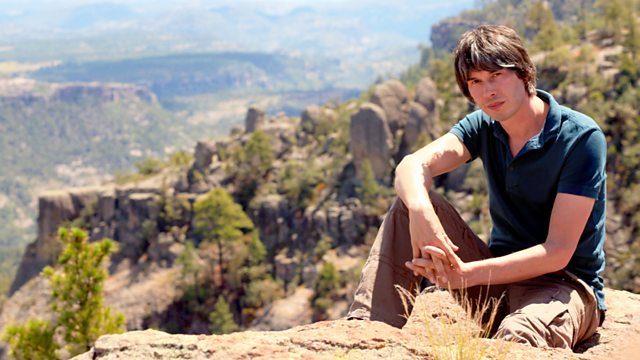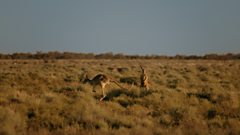Size Matters
Brian travels across Australia to explore the physics of the size of life. He discovers that size has a profound effect on how you move, how you feed, even how long you live.
In this episode, Brian travels around Australia to explore the physics of the size of life. Beginning with the largest organisms on our planet, a forest of giant eucalyptus trees, he then takes to the seas to get up-close with an ocean giant - the great white shark. From the safety of a steel cage Brian explains how the distinctive streamlined contours of the great white have been shaped by the physics of water.
Back on land, Brian heads out to the dry dusty outback. Here he tracks the largest living marsupial, the red kangaroo, to see how giants on land adapt to gravity. This all pervasive force influences the way in which living things move and the upper limit on how large they become.
Through the myriad species of insects in Queensland's rainforests, Brian begins his journey into the world of the small. At smaller scales, the effects of gravity are negligible and it is another force - the electrostatic force - that is dominant. This explains how flies and other insects can appear to defy gravity, using the traction of the electrostatic force to scale vertical windows.
But as life gets smaller, the very nature of the world appears to change as Brian explains with the aid of the tiny trichogramma wasp. This is one of the smallest multicellular life forms on Earth. For them, the atmosphere is a highly viscose environment - in a similar way to how we experience liquid - and so the trichogramma has to 'swim' through the air.
Even smaller still, are the thrombolites of Lake Clifton, near Perth. These mysterious growths are made up of colonies of bacteria, the smallest free-living life forms on Earth. Here, Brian finds that the size of life has a lower limit that is governed by the size of atoms and fundamental particles, which in turn are subject to the laws of physics.
The size you are not only dictates which forces of nature affect your life, it also influences your 'speed of life'. The tiny southern bent wing bat of South Australia loses heat so fast that they struggle to find enough food to stay alive. But as life gets larger, the pace of life - or metabolism - slows and this has profound consequences on life expectancy.
Brian explores this idea upon the tropical Christmas Island. This is a land of crabs of all different shapes and sizes. The largest - and most distinctive - are the giant robber crabs whose legs can span a metre. Not only are they the largest land invertebrate, they outlive their smaller cousins, some reaching well over 80 years of age. So the physics of size shapes life in many ways, not least the amount of years you get to enjoy it.
Last on
More episodes
Clips
-
![]()
Swimming with sharks
Duration: 02:17
-
![]()
Red kangaroo
Duration: 02:25
Credits
| Role | Contributor |
|---|---|
| Presenter | Brian Cox |
| Series Producer | James Van Der Pool |
| Producer | Paul Olding |
| Director | Paul Olding |



